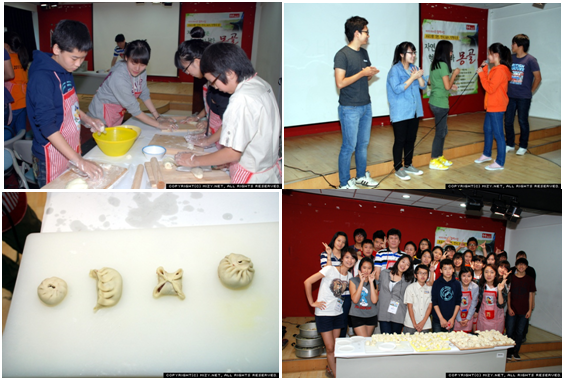Second Visit
(Image provided by the Metropolitan museum of Art)
I decided to revisit the museum on September 24th because of the vast collection of valuable artworks. In order to cover the most popular artwork galleries, I have reported on Egyptian art, Arms and Armor, European Paintings, European Sculpture, and Medieval Art last month, and this month I will be covering Ancient Near Eastern Art, African/Oceania/American Art, Asian Art, Greek and Roman Art, and Modern Art.
From Babylon to Cyprus
“If I was a Babylonian or a Persian, I would have been awed by the sheer size of some of these sculptures."
Near Eastern art, for many visitors, seemed to border Eastern and Western art. For a minority of visitors viewing Near Eastern art produced in the Late Period, they mistakenly believed that they were looking at Greek art (from which Near Eastern art was influenced). Some of the later sculptures, such as the ones depicting a sphinx and a man wearing a laurel crown (a crown that Roman emperors wore to display their power), have heavy influences from Greece and Rome. Near Eastern art produced in the early period resembled art produced in India, with many statues depicting the faces of deities in very high detail.
“If I was a Babylonian or a Persian, I would have been awed by the sheer size of some of these sculptures,” said a visitor, “just like a human being is awed by seeing a supernatural being.” Another visitor seemed to find similarities between Middle Eastern and Egyptian art. “Stone sculptures, murals that depict different creatures, and the enormous statues...looks like Egpyt influenced Middle Eastern art, or maybe it’s the other way around!”
From the Far East
"...Asian art is a must-visit."
For many tourists that seek diversity from Western art, Asian art is a must-visit. From massive sculptures of inland China to the porcelain pottery of Korea, there are many different types of artworks. The majority of China’s sculptures and murals depict Buddhist deities, Taoists, or monstrous demons in Chinese lore. Chinese artworks dominated the Asian gallery, where over 3 gallery spaces (along with a giant hall) are dedicated to them. One of the interviewees joked, “The number of Chinese art is as massive as the number of Chinese tourists!” There were also a large number of Japanese artworks, where most of the artworks consisted of embroidery and clothing rather than statues and metal ornaments. However, there was seldom number of visitors in the Japanese wing, unlike those housing Chinese artworks. “I think I am seeing the same number of designs over and over again,” remarked one visitor exiting the Japanese wing. “A homogenous mishmash of this and that,” said another.
One disappointing aspect for the Asian wing was the lack of artworks from Korea. Although the collection wasn’t small, there weren’t a significant number of them. “I think I would be more interested if there were more works present,” remarked 2 visitors. According to 20 people who visited the Korean section of Asian art, 15 of them said that the wing could use more Korean artworks. “Korea is rising,” remarked Ann Cheng (a tourist who agreed to share her identity), “and to spread its cultural knowledge, people should know more about its culture.”
AAA: American, African, Aboriginal
“Their method of displaying art seems more spiritual than that of other cultures, and I was impressed by that.”
Perhaps one of the most unique of the exhibitions, in terms of how these cultures express their artistic side, is the art gallery of African, American, and Oceanic art by Aboriginals. Many of these cultures have displayed their artistic talents with totems, ships, clothing, and personal items over paintings and sculpture. None of the works used metal, and very few used material other than wood or other biological materials. For this reason, this particular gallery seemed to display the distant tribal past of human civilization. The different geographical regions also seemed to play a role in the themes of the artworks created. From the tapestries of the Peruvian Andes to the patterns carved by the Maori, all of the artworks seemed to be different and unique from each other.
When I interviewed 30 tourists who visited all the galleries, I asked them to choose their favorite galleries. When I asked the 4 people, who have chosen the AAA galleries as their favorites, why they chose the galleries, the 4 people replied that the galleries have shown the most unique way of displaying their artistic sense. For one visitor, it was “their method of displaying art seems more spiritual than that of other cultures, and I was impressed by that.”
Olympic Art
“European culture has never been able to measure up to the success of Greek and Roman culture.”
Greek and Roman culture, the foundations of European civilization, created unforgettable artworks. Although Greek and Roman art seemed to concentrate on sculpture like the Egyptian and Middle Eastern art, the proportions and details of the face and body are incredible, even more so than Egyptian or Middle Eastern art. The artworks from the Renaissance period, shown in the previous article, resemble and emulate some of the techniques and subjects from the art of the Classical period. The main materials used seemed to be metal and marble, but the Romans also utilized paint, glass, and other diverse materials.
“Marble and metal is the main attraction of Greek and Roman art, and I like it,” quipped a tourist. “European culture has never been able to measure up to the success of Greek and Roman culture,” remarked an elder visitor. 16 out of 20 people said that they liked Greek and Roman art, but 15 out of the 16 people said that Greek and Roman art did not have much variety in terms of subject matter. “Roman and Greek art was cool and everything, but it’s like having 200 different alterations of Mona Lisa,” said the same tourist who remarked about the marble and metal used in Greek and Roman art.
MoMA?
"I like the pizzazz, the bang-bang, and the wow factor.”
When I visited the modern art section of the Met, I at first thought that the Met collection wouldn’t be as impressive as its other collections. The main reason for formulating this unproven hypothesis, shared by other tourists that have visited MoMA (Museum of Modern Art), is that New York already has an excellent museum dedicated to modern art. According to a survey of 25 people who have visited MoMA before visiting the Met’s modern art section, 15 of the 25 people told me that they didn’t expect to see a good collection. “New York already has a museum dedicated to modern art,” said one of the interviewees. “Why have this gallery at all?”
Fortunately, this idea was proven a misconception. The Met does have an excellent collection, including Van Gogh’s, Picasso’s, and Pollock’s works, albeit smaller than that of MoMA. Some works, although contemporary, have been transferred to European or American paintings. For some of the tourists, this was to some degree frustrating. “I want to look at modern art in the modern section, not the Europe section where older paintings dominate the walls,” remarked a tourist. However, many of them found the gallery to be rewarding. “I was able to see many unique and flashy works,” said a visitor who was with his family, “and I think that having the same thing over and over again is boring. I like the pizzazz, the bang-bang, and the wow factor.”
Comedi-art
"I found this to be the only gallery with laughs."
The Caricatures gallery, a special temporary exhibition, is a gallery that many visitors and tourists wish that it was a permanent exhibition. The cartoonist artworks both display the development of political art and artistic skills through the ages. From satirical drawings of da Vinci to political cartoons of 19th century England, the artworks provide many visitors laughs and food for thought. Unlike other artworks, which was mainly related to human, animal, or emotional subjects, most of the caricatures in this gallery are themed on politics.
Because the exhibition is fairly recent, many tourist groups or visitors do not have much foreknowledge of the artworks, if they had any previous information about it at all. However, it doesn't mean that they don't have opinions about this peculiar gallery. "I found this to be the only gallery with laughs," said a tourist from a school trip. Many of the comments referred to the strange, if not ridiculous, appearance of the artworks. "Laughs throughout the ages," remarked the same tourist.
Checkout
Mere words cannot cover all the wonders of human creativity found in the Met, and neither can my 2 articles. Many of the ancient treasures predate the museum that houses them, and even predate the city that houses the Met. The deep and rich history, as well as the creative strokes and genius that went into the works of art, will surely impress those who decide to visit the museum that lies on 5th Avenue. As the human mind creates even more masterpieces, the collection of the Met will ever become fuller.




















































































































 2011 청소년국제교류실무자워크숍신청서_신.hwp
2011 청소년국제교류실무자워크숍신청서_신.hwp
 미지청소년 기자단 지원서_이름.doc
미지청소년 기자단 지원서_이름.doc









































